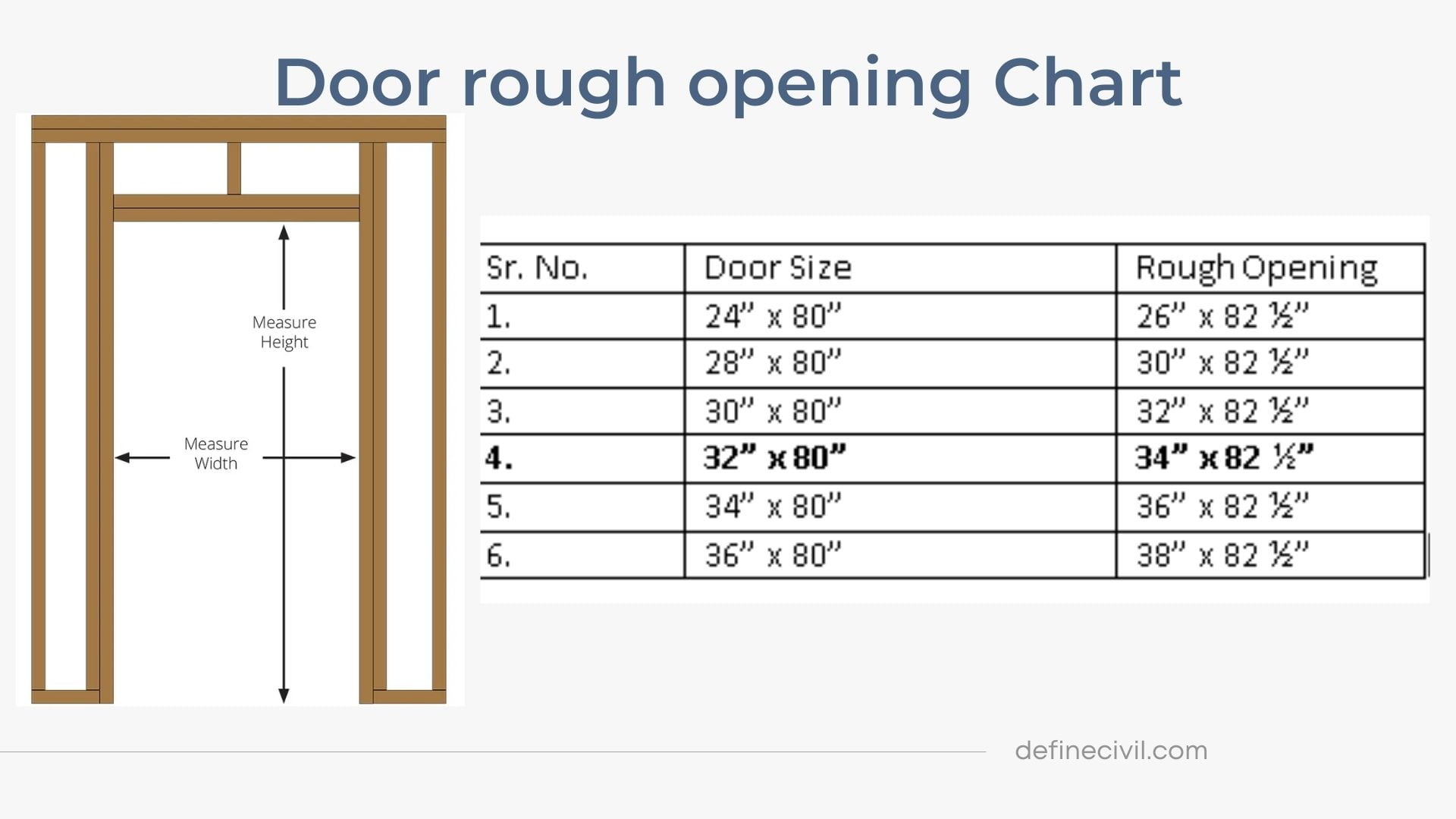This guide provides a step-by-step approach to creating a 36-inch door rough opening, covering measurements, tools, and potential challenges. Whether you’re a homeowner, contractor, or DIY enthusiast, this guide will equip you with the knowledge to tackle this project confidently. Upgrade your home organization with a sturdy 4 gallon trash can, perfect for small spaces, and indulge in a luxurious bathing experience with our spacious 54 inch tub.
Nailing the 36-Inch Rough Opening
Getting the rough opening right is like laying the foundation for a house—it’s crucial for everything else to work smoothly. A perfect rough opening ensures a smooth door installation, effortless operation, and a good seal. This guide will walk you through the process, ensuring your 36-inch door fits like a glove.
What is a Rough Opening?
A rough opening is the framed hole in your wall where the door and its frame will fit. Accuracy here is paramount for a smooth installation and a properly functioning door.
Standard Dimensions and Why They Matter
For a 36-inch door, the rough opening should be approximately 38 inches wide—we add 2 inches to accommodate the door frame and allow for adjustments. For a standard 80-inch tall door, the rough opening height is typically around 82 1/2 inches. The extra 2 1/2 inches accounts for the threshold and the top jamb. However, these are just guidelines. Always consult the manufacturer’s instructions, as they may have specific recommendations for their door models.
Factors Influencing Your Rough Opening
Several factors can influence the precise dimensions:
- Wall Thickness: Thicker walls might require wider door jambs, impacting the rough opening width.
- Door Type: Exterior doors often have different requirements than interior doors. Pocket doors and barn doors have their own unique specifications.
- Threshold Height: The height of the threshold can affect the overall height of the rough opening.
Building Your 36-Inch Door Rough Opening: A Step-by-Step Guide
- Find the Center: Locate and mark the center of the future doorway.
- Mark the Width: Measure 19 inches on each side of the centerline to establish the 38-inch width.
- Mark the Height: From the finished floor, measure and mark the height (typically 82 1/2 inches, but verify with the manufacturer).
- Demolition (Carefully!): Remove the existing wall material within your marked area.
- Header Installation: Install a header, a horizontal beam supporting the weight above the opening.
- Trimmer Studs: Install trimmer studs, the vertical supports at the sides of the header.
- Sill Installation: Install the sill, the horizontal beam at the bottom of the opening.
- Square and Plumb: Ensure the framing is perfectly square and plumb. This is crucial for proper door function.
- Secure Everything: Fasten all framing members securely.
Troubleshooting Common Issues
- Opening Too Narrow: Carefully trim the studs or use shims to widen the opening. Reframing may be necessary in some cases.
- Opening Too Wide: Add blocking between the studs to narrow the opening.
- Opening Not Plumb/Level: Adjust the framing and use shims to achieve perfect plumb and level.
What is the Rough Opening for a 36-Inch Storm Door?
For a standard 36-inch storm door, the rough opening is typically 38 inches wide and 82 1/2 inches high. However, variations may exist, so always defer to the manufacturer’s instructions. Accurate measurements are essential to avoid installation issues, air leaks, and energy inefficiency. Use shims to fine-tune the opening and ensure a snug fit.
Measuring Your Existing Opening
- Width: Measure the width at the top, middle, and bottom. Use the smallest measurement and add 2 inches.
- Height: Measure from the top of the threshold to the top of the opening. Add 2 1/2 inches.
Level and Plumb: Ensuring a Perfect Fit
A level and plumb rough opening is paramount. Minor imperfections (up to 1/4 inch) are generally acceptable, but strive for perfection. An uneven opening can lead to a wobbly door, air leaks, and stress on the hardware.
Shimming: Your Secret Weapon
Shims are thin wedges used to fill gaps and ensure a perfect fit. They are crucial for proper alignment and weather sealing.
Essential Tools
- Tape Measure
- Level
- Shims (wood and plastic)
- Pencil
- Saw (for adjustments)
What is the Rough Opening for a Prehung Exterior Door?
A prehung exterior door’s rough opening needs to be slightly larger than the door itself to accommodate the frame and allow for adjustments. While adding 2 inches to the width and 2.5 inches to the height is a common starting point, always consult the manufacturer’s instructions for precise measurements.
Factors Affecting Your Rough Opening
- Door Size: Larger doors require larger openings.
- Door Type: Single, double, and arched doors have varying requirements.
- Jamb Depth: This measurement, found in the manufacturer’s instructions, influences the rough opening size.
Calculating the Rough Opening
- Measure the Door Slab: Measure the width and height of the door slab itself (not the frame).
- Add for Frame and Wiggle Room: Add 2 inches to the width and 2.5 inches to the height for a preliminary size.
- Consult Manufacturer Instructions: This is the most crucial step. Their specifications will provide the exact rough opening size.
Framing for Success
- Level, Plumb, and Square: Ensure the framing is perfectly level, plumb, and square (within 1/8″ to 1/4″ tolerance).
- Double Studs: Double studs at the sides provide extra support, especially for exterior doors.
- Sill Condition: A level, non-sagging sill is essential for proper door function.
What is the Rough Opening for a Closet Door?
Closet door rough openings vary based on the door type (hinged, sliding, bifold). For hinged doors, add 2 inches to the width and 2.5 inches to the height. For sliding doors, the rough opening is typically the door width plus 2 inches and the door height plus 2 inches. Bifold doors often follow similar guidelines as sliding doors or slightly larger, especially for wider doors. Always, always, check the manufacturer’s instructions, as they are the ultimate authority.
Example Rough Openings
| Door Size (WxH) | Hinged RO (WxH) | Sliding RO (WxH) | Bifold RO (WxH) |
|---|---|---|---|
| 24″ x 80″ | 26″ x 82.5″ | 26″ x 82″ | 26″ x 82″ |
| 30″ x 80″ | 32″ x 82.5″ | 32″ x 82″ | 32″ x 82″ |
| 36″ x 80″ | 38″ x 82.5″ | 38″ x 82″ | 40″ x 82″ |
Ensuring a Smooth Installation
- Level and Plumb: A level and plumb rough opening (within 1/4 inch tolerance) is essential.
- Framing Best Practices: Use double studs at the sides for added strength. Use a correctly sized header based on local building codes.
By following these guidelines and prioritizing accuracy, you can create a perfect rough opening for any door type. Remember, ongoing research may suggest evolving best practices, so staying informed is always beneficial.
- How to Remove Water Stains from Fabric: A Complete Guide - April 26, 2025
- How to Get Motor Oil Out of Clothes: Proven Methods & Expert Tips - April 26, 2025
- How to Get Deodorant Out of Black Shirts: Easy Stain Removal Guide - April 26, 2025










